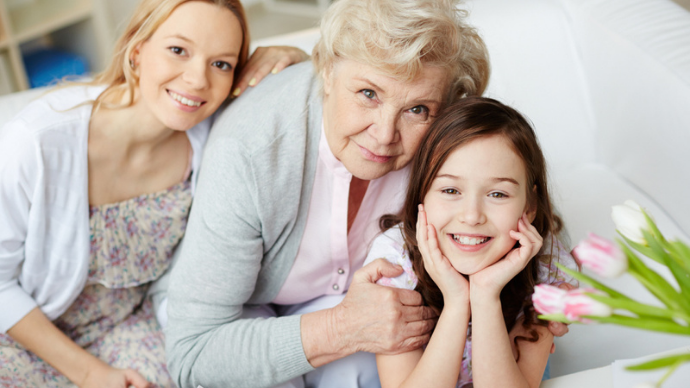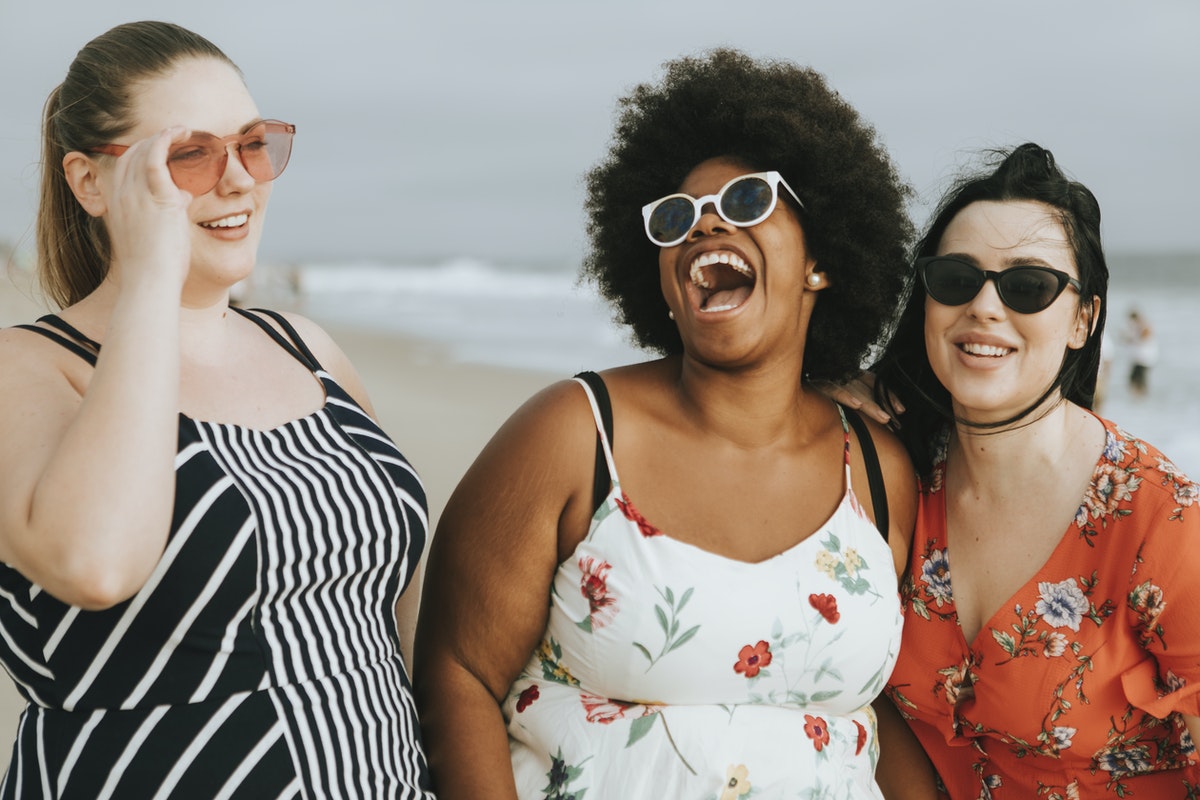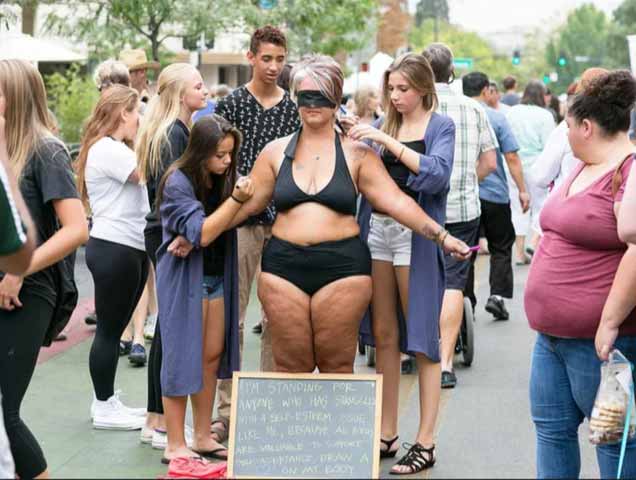Body dissatisfaction and eating challenges are on the rise, affecting every sector of our population, from our youth to our elderly, but with an alarming increase among teens, young adults and children of increasingly younger ages.
We’ve reached a point in history where nearly every person is in some way affected by society’s heightened focus on beauty images, health and weight.
– Connie Sobczak and Elizabeth Scott, co-founders of The Body Positive.
Almost half of American children between first and third grade want to be thinner, half of 9- and 10-year-old girls are dieting, and 58.6% of girls and 29.2% of boys are actively dieting. More than half of teenage girls and nearly a third of teenage boys use unhealthy weight control behaviors such as skipping meals, fasting, smoking cigarettes, vomiting and taking laxatives according to the Redefining Wellness Project.
What’s creating this heartbreaking reality?
The younger generation has learned to hate their bodies and “diet” from our culture — from us.

Redefining Wellness reports that “75% of American women surveyed endorse unhealthy thoughts, feelings or behaviors related to food or their bodies,” and “Americans spend over $60 billion on dieting and diet products each year” even though “95% of diets fail and most of us will regain the lost weight in 1-5 years.”
Kids model adult behavior — how we react to ourselves in a family photo, how we approach “good nutrition” going on and off “diets” to maintain or shrink our bodies, how we talk negatively about our bodies as they change, age — making them fear they won’t be loved unless they possess an “ideal” body. Sadly, this is normal, everyday adult conversation.
We can do better. We have the power to create the necessary cultural shift to save the next generation from negative body image as a root cause of many unhealthy behaviors with food and exercise.

You can learn to live peacefully and healthfully in your body by becoming competent in the five core skills of the Be Body Positive Model.
The model teaches us to:
♡ Reclaim health ♡ Practice intuitive self-care ♡ Cultivate self-love ♡ Declare our own authentic beauty ♡ Build community
ONE: Begin with the foundation of this work: Reclaiming your health.
Reduce suffering and heal from body dissatisfaction by challenging the ingrained societal and familial messages that say wellness is dependent on your weight.
Learn to identify and reject the billion-dollar diet industry that drives and profits off of body shame. If you’re not thin (enough) or if you gain weight for any reason, diet culture promotes “wellness” plans to achieve “health,” aka thinness, albeit temporary. Eventually you regain the weight, often more as a protective mechanism against future self-imposed famines. And then you start again, because it “worked” before, right? Truth bomb: All dieting is yo-yo dieting.
Maybe you’ve been able to maintain your body size, but at what cost? Has your forever diet led to obsessive behaviors with food and/or exercise?
To reclaim health, ditch diets and the limited view of health that equates your weight to your wellness.
♡ Want more inspiration and love to listen to podcasts?
Check out my latest interview: The Anti-Diet and Body Respect Movement – Episode 43 of the Love Your Enthusiasm podcast.
TWO: The next step to becoming body positive competent is to strengthen your intuitive self-care skills.
Improve your health by listening for and responding to your unique body’s needs with eating, exercise and all aspects of your life.
The outside advice from “experts” telling you what’s best for your body may not be right for you. What? No gluten-free, dairy-free, refined-sugar-free food plan to follow? With no food rules you may feel lost at first because you’ve become disassociated from your body, like it’s an object, just a machine to be fed and moved.
Instead, intuitive self-care teaches you to get back inside your body. With practice you’ll gain confidence to be the expert of your own body and health.
THREE: The third body competency skill is building a self-love practice.
Self-love is about cultivating kindness, respect and compassion for yourself and your perfectly imperfect human body. It’s a deep knowing that you are valuable and worthy regardless of your body’s size or appearance. And research shows that it leads to improved self-care — the intuitive kind, that is.
Furthermore, self-love is protective against your inner mean voice that hijacks your brain when you don’t like what you see in the mirror. Instead of pushing away your negative body talk, a self-love practice teaches you to turn toward the discomfort and meet it head on with compassion, giving you permission to be human and reject ideals.

FOUR: Next, you have permission to be entirely yourself and declare your authentic beauty.
Instead of feeling ashamed, fighting and fixing your “flawed” parts, respect body diversity and honor that your body is expected to change through each developmental stage of life.
“Finding beauty in aging, growing, and in being different means beauty is no longer something static we try to attain, but rather a part of our lived, changing experience,” body positive leader, Sarah Lewin says.
This wisdom, like self-love, also leads to true self-care, because you let go of striving to meet society’s definition of beauty.
We radiate beauty in many ways that have nothing to do with our appearance. For example, my beauty is my laugh, my passion for the body positive movement, the giddiness I feel when surfing a wave and my singing silly commercial jingles out of tune.
“Seeing our beauty is not an exercise in vanity — it’s a necessary component of good physical and emotional health,” Sobczak says.
FIVE: And finally, one of the easiest ways to reclaim your health, practice intuitive self-care and self-love and see your own beauty is in a supportive body positive community.
Together let’s promote awareness and education to reject our culture’s perfectionist body ideals that have led to the alarming increase in body dissatisfaction and unhealthy behaviors with food and exercise.
Join me in creating a Be Body Positive community — for the health of our kids, for every body.




